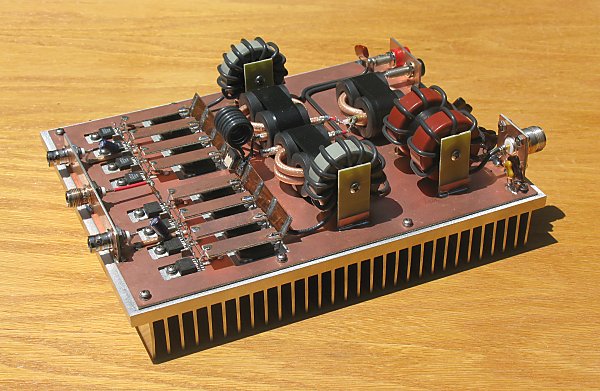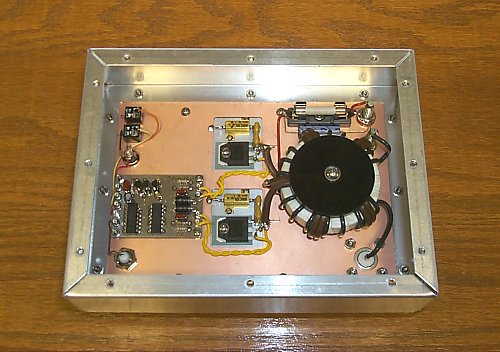First off, what turns ratio are you needing? Everything I build is 1:1 ratio to keep modulator current levels in sane territory. I also recently changed the output topology in my transmitter to a coaxial wound binocular type core. It does get warm at 750 watts carrier, but not hot. I needed an isolated output in the PA stages to facilitate line derived B+ in the following generations of the transmitter.
FWIW, binocular type output transformers are the standard in solid state PA's from DC to 200 MHz.
+-RH
I think 1:1 is probably fine. It looks like you have the output balun as your only matching. I don't know if that's true or not. I'm not an electrical engineer so I don't understand the "isolated output line derived B+" part.
I see some amplifiers that do the matching with one balun as you do, but I've seen others (especially VHF amps) that use three baluns. One for each side of the amp and then one final on the output. Is there an advantage to this?
Really all I am trying to do is get my efficiency up above 5 MHz. Everything on my PCB has been optimized (no long traces, plenty of caps, good groundplane, good waveforms). I've narrowed the problem to the output match and I think it is the fact that I'm using wire on my output balun instead of coax. I'll try what you did first, redhat, with the coax because that shouldn't be hard. Then Ill try a T200 if it still doesn't work.









